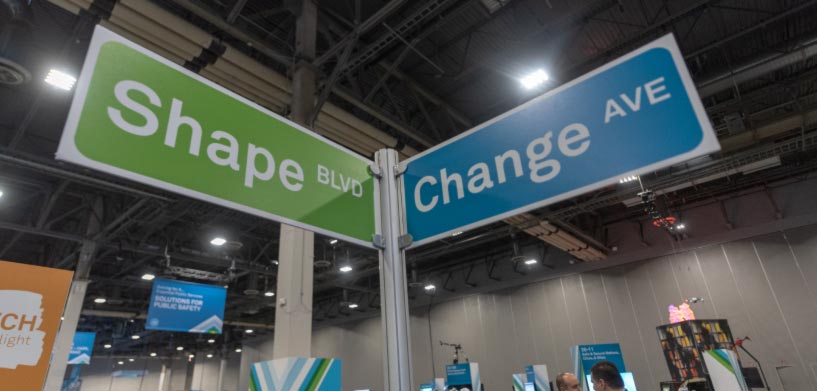Our Change Makers Blog Series continues with a closer look at crime reporting methodologies as agencies make the leap from a system that’s been around since the 1930’s to new, federally mandated standards that take effect in 2021. Here’s what Shaping Smart Change looks like after a century of the same old, same old in crime reporting for public safety agencies.
Two subject matter experts from Hexagon’s Safety & Infrastructure division recently joined us at HxGN LIVE 2018 to discuss the changing face of crime fighting and reporting. Agencies are under pressure to meet new standards set forward by the Federal Bureau of Investigation with a new system known as the National Incident-Based Reporting System (NIBRS) that was designed to improve the overall quality of crime data collected by law enforcement, capturing details by crime incident and offenses within incidents—including victims, offenders, relationships between victims and offenders, arrests made, and property involved in the crime.
Gina Steadman, a product manager for Intergraph InPursuit WebRMS, Hexagon’s cloud deployable, records management system for police and law enforcement, explained existing crime-reporting technology this way, “Today, a large number of agencies are still using an antiquated reporting methodology, Uniform Crime Reports (UCR), which has been around since the 1930s and has changed very little since the last real evolution in the 1970s.”
Once paper-based, UCR has evolved over time, but it was built around a rule of logic that reported crimes based on a hierarchy of severity, with only the most severe crime reported by incident. As a data-reporting tool, UCR is inherently limited in terms of the granularity of crime data collected.
Steadman went on to say, “If you had a major event or there were multiple offenses, victims and suspects, historically the ‘highest’ crime would only be reported. For instance, murder would be your most severe crime (and the crime reported) even though there may have been an aggravated assault or an armed robbery that also took place.”
Ben Van Horne, a technical director and public safety industry consultant for Hexagon’s Safety & Infrastructure division,explained the advantages of NIBRS as an alternative. “The new standards are more robust as a crime statistic gathering component. The data is more realistic in providing analytic information both for the states as well as the Federal Government as to true crime in crime areas.” In effect, NIBRS data is richer, more accurate and includes full details of crimes committed including peripheral events, relationships and players involved.
At this time, the FBI estimates only one-third of U.S. law enforcement agencies are using NIBRS, though the transition to NIBRS is mandated to change over by January 1, 2021. Intergraph InPursuit WebRMS already supports NIBRS—supporting crime reporting systems as agencies make the switch.
The U.S. and Canada are among the only agencies in the world that have a federal mandate to submit crime data, which presents a unique opportunity not only to report crime, but also to actually predict crime trends. For the agencies adopting the new NIBRS system, there will be big changes ahead, and they’ll need tools, technology and support in the process.
According to Van Horne, “The new standards represent a significant change for these agencies, and if they can work with their states and provinces in advance of these migrations, they can understand how that change looks and what that change is going to provide their agencies as they move forward.”
Hexagon is well positioned to support agencies that are already using NIBRS, still using UCR, or somewhere in between. According to Steadman, “We have agencies that are strictly NIBRS and the federal rules. But (WebRMS) is flexible enough to support the existing agencies that we have as well. And as states continue to roll out, we can accommodate anything they hit us with. It’s a really flexible solution as a tool for law enforcement.”
As we continue our Change Maker Blog Series, we’ll be taking a closer look at other essential functions like public safety that are undergoing dramatic changes in how they approach their daily work. For North American police forces, smart change means a complete overhaul of their existing police reporting system — a change for the better for those they protect and serve.

















